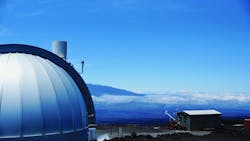In May 2018, we noted that on April 17, 2018, Hawaii's Mauna Loa Observatory (MLO) – which has been taking daily measurements of atmospheric CO2 since 1958 – had recorded its first-ever reading in excess of 410 ppm.
Three years later, MLO reported even higher measurements. At 419 ppm, it was at the time the highest monthly average of atmospheric CO2 in more than four million years. We don’t need to wait another three years to set a new (unwelcome) record. MLO reported in May that the new monthly average was 421 ppm. Clearly, the curve shown in last June's Clark’s Remarks is not flattening. CO2 levels are now comparable to those found more than four million years ago during the Pliocene Epoch’s Climatic Optimum, when sea levels were high enough to cover South Florida and temperatures were much warmer.
Incidentally, measuring peak CO2 levels in mid-spring was not a random choice. The peak levels seen in April and May are due to plants, which at that time of year are much more prevalent than in the Northern than the Southern Hemisphere, emerging from their winter dormancy. As those plants begin to grow and bloom in the summer, they will capture some of the CO2 in the atmosphere as part of the photosynthesis process.
Although there was an estimated 6.4% decrease in global CO2 emissions as a result of COVID-19 pandemic restrictions on manufacturing, travel, and social activities, they quickly rebounded to pre-pandemic levels when those restrictions were lifted. According to Ralph Keeling, Scripps Institution of Oceanography geochemist and son of climate scientist Charles David Keeling, “It's depressing that we've lacked the collective willpower to slow the relentless rise in CO2. Fossil-fuel use may no longer be accelerating, but we are still racing at top speed towards a global catastrophe.”
Rick Spinrad, NOAA Administrator, nailed it: “The science is irrefutable: humans are altering our climate in ways that our economy and our infrastructure must adapt to. We can see the impacts of climate change around us every day. The relentless increase of carbon dioxide measured at Mauna Loa is a stark reminder that we need to take urgent, serious steps to become a more climate-ready nation.”
A regular contributor to HPAC Engineering and a member of its editorial advisory board, the author is a principal at Sustainable Performance Solutions LLC, a south Florida-based engineering firm focusing on energy and sustainability. He can be reached at [email protected].
About the Author
Larry Clark
A member of HPAC Engineering’s Editorial Advisory Board, Lawrence (Larry) Clark, QCxP, GGP, LEED AP+, is principal of Sustainable Performance Solutions LLC, a South Florida-based engineering firm focused on energy and sustainability consulting. He has more than two dozen published articles on HVAC- and energy-related topics to his credit and frequently lectures on green-building best practices, central-energy-plant optimization, and demand-controlled ventilation.
